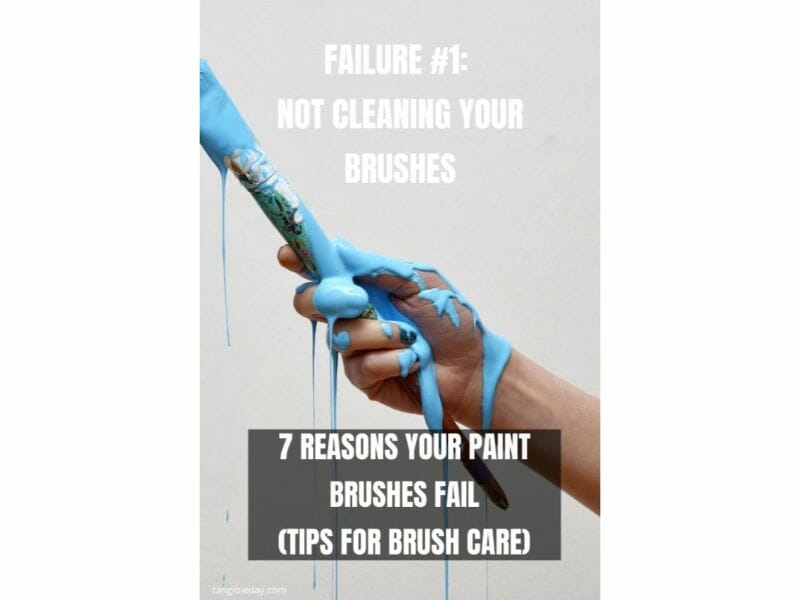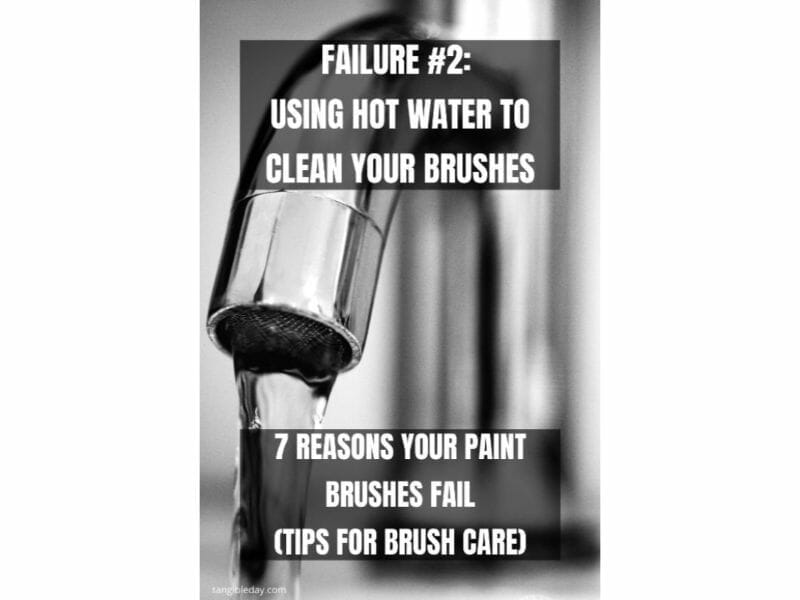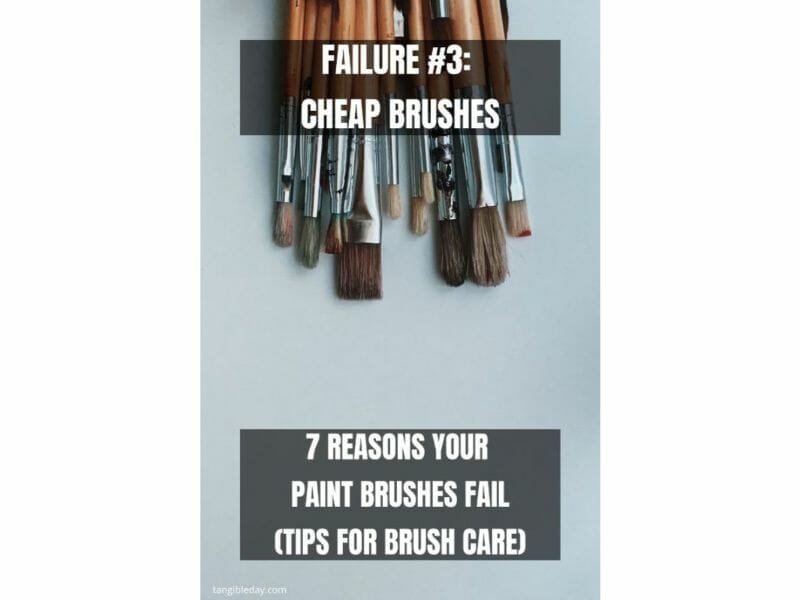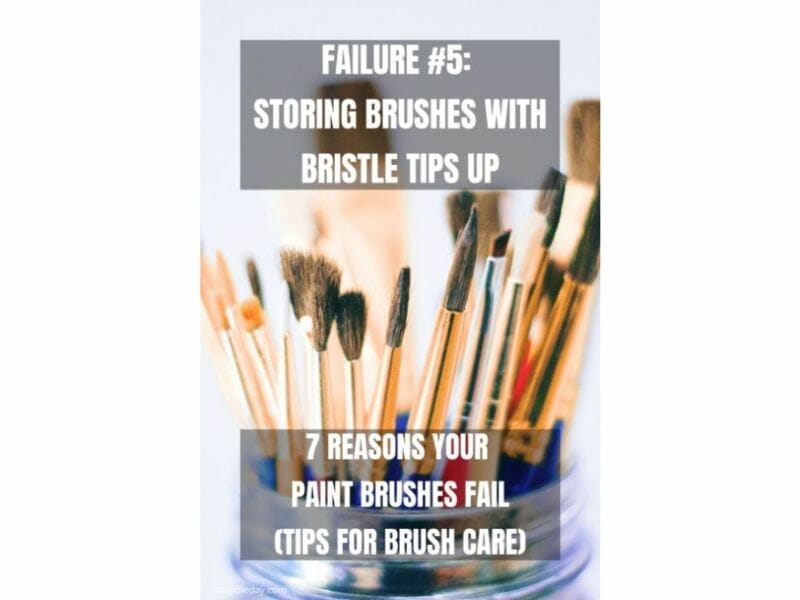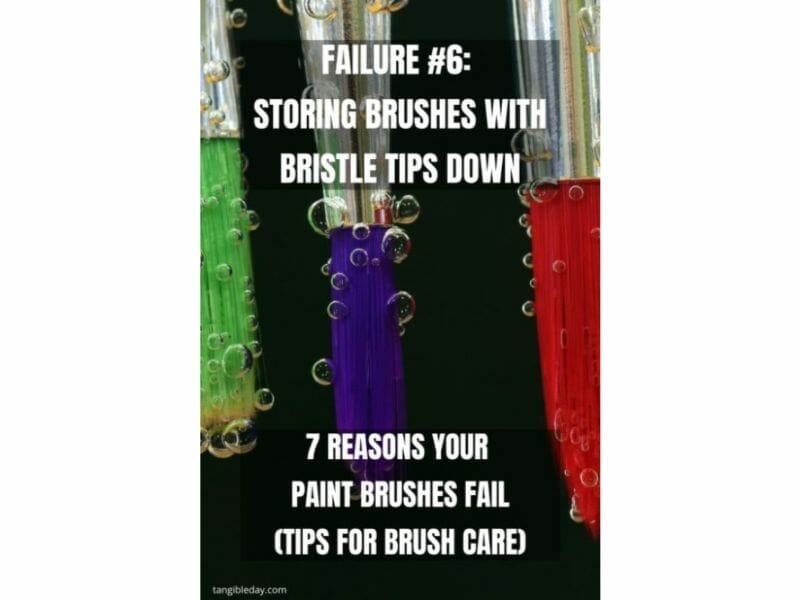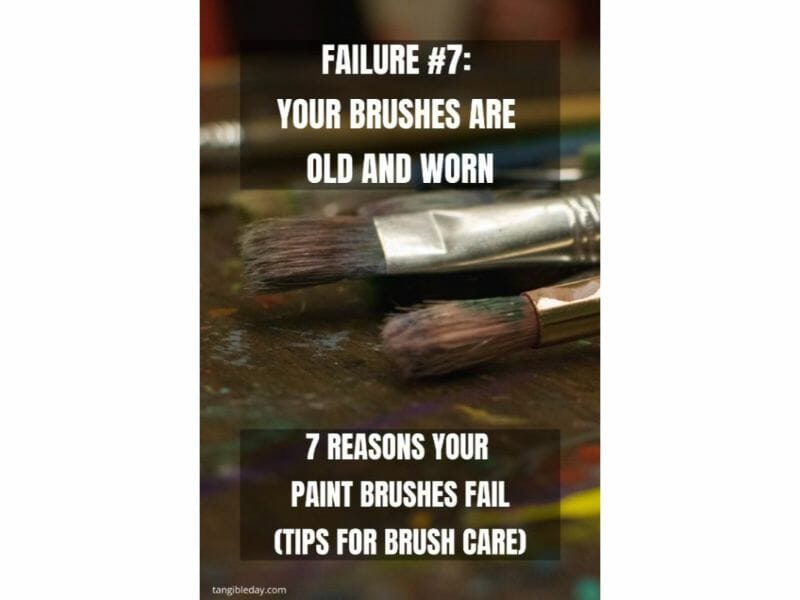Don’t you hate it when your paint brushes fail you? Painting miniatures often requires precision and reliable brush control. A paint brush with stray hairs, splayed filaments, and twisted bristles is useless for painting details. There are many reasons why a paint brush will start to fail and fall apart. Poor maintenance, bad habits, and overuse all contribute to paint brush failure and dysfunction.
In this article, I highlight 7 reasons why your brushes for painting miniatures fall apart, and the key ways you can avoid the problem for longer-lasting paint brushes.
So, you’ve spent all that money on high quality brushes for painting miniatures? Awesome! Now, it’s time to make sure they last a long time and continue to provide you with great service in your hobby. For a more details in finding the best brushes for painting miniatures and tabletop gaming models, here’s a free guide.
The intended service life of any paint brush is related to 1) the quality of the brush, and 2) how well its user cares for the brush.
Here are the 7 reasons why your brushes for painting miniatures fall apart (and how to solve the problem):
1. Not cleaning your brushes
Dried acrylic paint and dirt in your brushes does two things to ruin paint brushes. And, it doesn’t matter if your brushes are expensive or cheap, not cleaning your brushes will kill them quick.
Dried acrylic paint is a monster that eats brushes for breakfast.
First, as acrylic polymer dries it contracts and distorts whatever it has attached to. Drying acrylic paint can lead to microscopic breaks in natural hair bristles can slowly degrade the integrity of the filament, reducing snap, spring, and other desirable miniature painting qualities of a brush.
Related to this, if acrylic paint dries deep inside the ferrule (usually a metal band around the handle/bristle interface), it can permanently disrupt the pointed shape of a brush leading to splitting brush tips and ruin a brush entirely.
Second, acrylic paint build-up and other debris within a brush can also prevent proper moisture retention of brush bristles. This is particular true for brushes with natural bristle tufts, which have intrinsic organic oils that help retain brush character.
In short, a dirty brush will literally dry out and wither. Bristles will become brittle, stiff, and may even break off. For synthetics, debris and soils within the brush hairs will warp the proper shape of every bristle, which leads to the entire brush losing its shape.
Solution
Clean your brushes after every painting session with warm water and conditioning brush soap.
2. Using hot water to clean your brushes
Brush bristles are held together with glue and other means in the handle assembly. If you use hot water, which is any water too hot to touch, you will soften and weaken the glue inside the brush. At this point, things will start to fall apart.
Bristles will work loose. And, once a single hair falls out, the entire bristle tuft will eventually come apart. This is also the reason why you should never pull out stray hairs, and snip them off with a sharp blade or scissor instead.
Exposing your brushes to hot water for any period of time is a slow death for any brush.
Solution
Use cold or lukewarm water when you’re cleaning your brushes. Also, make sure the water in your brush water pot isn’t too hot when you first refill it.
3. Cheap brushes
Cheap paint brushes have design flaws or assembly shortcuts in their construction. Inexpensive, budget brushes may have bristles of different thickness and quality (e.g., hybrid or filler material), brittle or weak construction glues, and misshapen ferrules, which allows bristles to stray from their position on the handle.
Together, these problems in cheaper, lower quality brushes lead to a shorter brush life. Brush tip shape isn’t reliable, failing after a short time of use. Or, the entire ferrule and bristle end falls off the brush handle (which I find is a common problem even with proper care).
Solution
Buy the best brushes you can afford. Or, buy really cheap brushes and be aware of their shorter service life. If you’re looking for budget brushes that will serve you well for painting miniatures, you can see my budget brush recommendation.
4. Dry brushing with the wrong brush
Not all brushes have the robust bristles requires to withstand the abuse of dry brushing techniques. Certainly, many miniature painters including myself relegate old, worn out brushes to the dry brush heap. But, if you are the proud owner of a new paintbrush, be aware of its capabilities.
Kolinsky sable brushes, for example, are not meant for dry brushing. Their bristles are soft and work well only with wet paint media. Wet paint acts like a lubricant, whereas the dry brushing technique requires no moisture in the bristles. In fact, dried pigment in any natural sable brush is a death knell (see brush issue #1). Even synthetic brushes may not be up to the task of dry brushing. Golden or white taklon brushes are meant to replicate the feel and utility of high quality natural haired brushes. Don’t use these for dry brushing.
Dry brushing is a method that abrades fragile brush hairs, wearing them down, and destroying the brush tips.
Solution
Use brushes designed for dry brushing, e.g., hog hair brushes, or use old worn out sable or synthetic brushes. I tend to like using makeup cosmetic brushes or stencil brushes which you can find in different sizes and shapes for dry brushing technique on miniatures.
5. Allow your brushes to dry with the bristle tips up
Allowing your brushes to dry with the bristle tips up is particularly bad for brushes with wooden handles. After cleaning your brushes, storing your them with wet bristles upwards in a cup, mug or other holder, is harmful for the integrity of the brush because water will seep into the ferrule.
Gravity drawn water seeping into the ferrule will carry residual dirt and debris (that you didn’t entirely clean out) will accumulate deep inside the brush head and slowly degrade the bristles. Importantly, in wooden brush handles, waterlogged wood will cause the handle end to expand, breaking the glued bonds holding the ferrule and bristles together.
Solution
After cleaning your brushes, remove as much water moisture as possible from the bristles. Store your brushes horizontally on a brush stand or rest.
6. Storing your brushes with the bristle tips down
Storing your brushes with the bristle tips down inside a cup or mug will certainly ruin your brushes. Bristle tips are delicate and not built to hold the weight of the entire brush. Wet bristles are particularly vulnerable to tip-down storage. The prolonged bent tips of brushes stored in this manner can even be a permanent feature. Nobody likes curly brush tips and misshapen brushes.
The only exception for storing your brushes upside down is if you can suspend the brushes from their handles with the bristles not touching the ground/table. You can see how this is done with this brush cleaner tank.
Solution
Store your brushes horizontally on a brush rest or stand. Or use a brush cleaner tank with a spiral holder which suspends brush tips to prevent them from bending or deforming as they hang to dry or soak in cleaner.
7. They are getting old
Age and regular use is the ultimate end for a paintbrush. If you paint with your brushes regularly, then eventually they will wear out from normal wear and tear. High-quality kolinsky sables have very long lives with a service lifetime of years (see what a professional can paint with multi-year old miniaturist W&N Series 7 brushes). However, even these great brushes will fall apart and you’ll have to retire them.
Solution
Respect your old brushes. Try and repurpose them in other capacities, e.g., basecoating, dry brushing, paint mixers, wash or glue applications. Buy new brushes (here are 5 key features to look for in paint brushes for painting miniatures).
Summary
Paint brushes are the primary tool for the miniature painter. As an essential tool for painting minis, your brush is an extension of your creativity. Take care of them and they will return the favor. Here are the following 7 things that lead to a brush falling apart (not all these are in your control).
- Not cleaning your brushes
- Using hot water to clean your brushes
- Cheap brushes
- Dry brushing with the wrong brush
- Allow your brushes to dry with the bristle tips up
- Storing your brushes with the bristle tips down
- They are getting old
Ultimately, the number one rule for painting miniatures and working with your tools is to have fun and learn as much as you can. For more about proper brush care, see this article about “simple brush cleaning tips for miniature painters”.
Experiment, play, share.
Thank you for reading!



Tangible Day on YouTube (Miniatures and More!)

